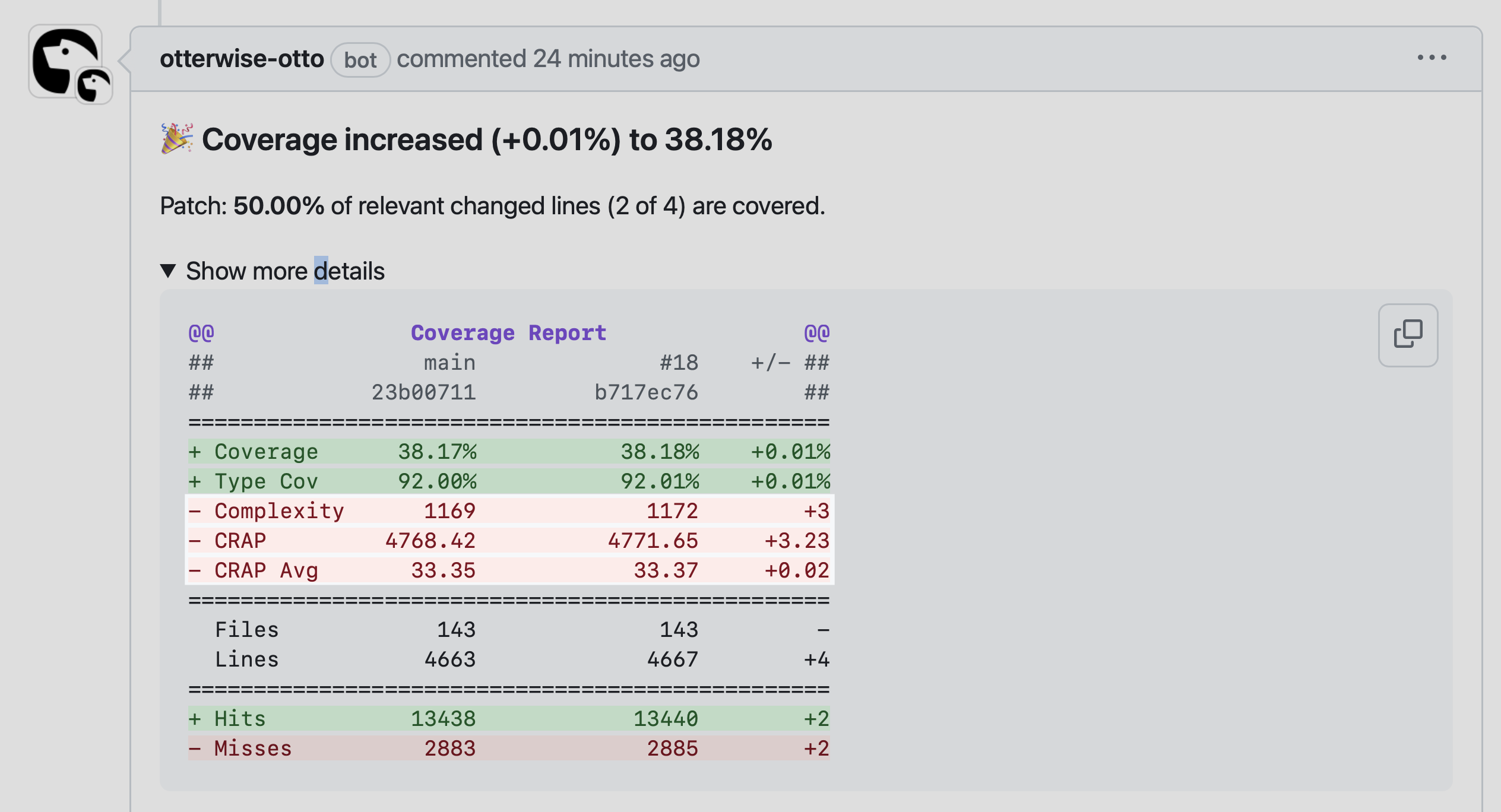Two common code quality metrics are CRAP (change risk anti-patterns) and Cyclomatic Complexity, both incredibly important to ensure testable and understandable code.

Cyclomatic Complexity
This is one of the oldest complexity metrics (more than 35 years old), and it still holds up today as a great way to measure code complexity. It describes how complex your code is with a number starting from 1 and scales up the more paths your code has. You want a low cyclomatic complexity score.
Some of the easiest indicators of increased complexity can be:
- case
- match
- elseif
- foreach
- if
- ??, ?:, ternary
- while
- for
Essentially the more paths in your code, the more complex it is. An example can be an if statement, since it splits your code in to two paths: the true path, and the false path.
Understanding the Score
Some general rules for complexity scores:
- 1-6 is considered low complexity
- 7-9 is moderate complexity, but still understandable
- 10-20 is high complexity
- +20 is very complex and hard to understand
Example
Let's look at how complexity increases with code paths:
// Cyclomatic Complexity: 1
function getUserStatus($user) {
return $user->status;
}
// Cyclomatic Complexity: 2 (one if statement = +1)
function getUserStatus($user) {
if ($user->isActive()) {
return 'active';
}
return 'inactive';
}
// Cyclomatic Complexity: 4 (three conditions = +3)
function getUserStatus($user) {
if (!$user->isActive()) {
return 'inactive';
}
if ($user->isPremium()) {
return 'premium';
}
if ($user->isTrial()) {
return 'trial';
}
return 'active';
}
Reducing Complexity
When you encounter high complexity, consider these strategies:
- Extract methods: Break complex functions into smaller, focused ones
- Early returns: Use guard clauses to reduce nesting
- Polymorphism: Replace conditional logic with polymorphic classes
- Lookup tables: Replace long switch/case statements with arrays or configuration
Note: Sometimes complex business logic is unavoidable. The goal isn't always to have the lowest score, but to ensure complexity is justified and well-tested.
Change Risk Anti-Patterns (CRAP)
Change Risk Anti-Patterns is a metric from 0 and up which ranks files based on Cyclomatic Complexity and Code Coverage. Meaning if your code is not too complex, and it has a high code coverage, the CRAP score will be low.
The formula is: CRAP = CC² × (1 - coverage/100)³ + CC
This formula shows why test coverage matters exponentially - untested complex code gets penalized heavily.
You want to have a low CRAP score, which can be accomplished by adding more covering tests, as well as reducing Cyclomatic Complexity.
Practical Thresholds
- 0-30: Generally acceptable
- 30-60: Needs attention - add tests or refactor
- 60+: High risk - prioritize for refactoring
In OtterWise we generally work with two types of CRAP, Combined and Average, this is done because neither is perfect by itself to represent quality of a pull request. First let's cover the difference.
Combined
This is the combined CRAP of all tracked files. The metric ranges from 0 and up. So if you have 2 files, one with 33 and another with 10, that makes your CRAP 33+10 = 43.
Average
This is the average of your CRAP across all tracked files. Using the above example of 2 files, one with 33 and another with 10, your average would be 21,5.
Why both Combined and Average?
Now that we have established the meaning, we can start digging in to why they are both important. We will continue with the above example (2 files; CRAP of 33 and 10 respectively).
Our average is 21,5 and our combined is 43, now let us imagine a team member submits a Pull Request that adds a new file that has a CRAP score of 0, bringing our total files to 3, but not affecting our combined CRAP. This will bring our average CRAP to 14,3. If we only reported average, this would like this collaborator actually brought down the project CRAP, but in fact they had no impact on the overall (combined) CRAP.
One could think that only using combined CRAP would be better then, however that also has some shortcomings. The most obvious one is that whenever a new file is added (with a CRAP score > 0), you always increase the combined CRAP, even if your file actually reduces the average. So despite your file being less CRAP'py than the average in your project, the pull request would still be marked as 'bad' since it increased CRAP, if we don't consider average CRAP as well.
Key insight: Track trends, not just absolutes. A PR that increases combined CRAP but lowers average CRAP is actually improving your codebase quality per file.
Track These Metrics Automatically
OtterWise monitors CRAP and Cyclomatic Complexity on every pull request, giving your team instant visibility into code quality trends. No manual calculation, no guesswork - just clear metrics that help you ship better code.